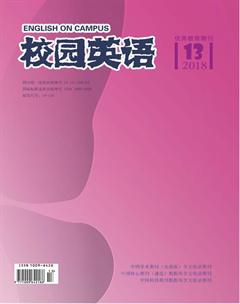Brief Characteristics of Literature Translation
【Abstract】Translation has been sub-divided into many categories, such as literature translation, scientific translation, and so on. From the view of literature translation, the aim of this thesis is to mainly discuss the characteristics of literature translation. The paper studies the literary translation from the aspect of context impact, lexical characteristics and grammatical characteristics.
【Key words】literary translation; lexical characteristics; grammatical characteristics
【作者簡介】董志超,广州白云工商高级技工学校。
I. The significance of literature translation
As one of the most representative theories in literary translation, the conveyance of spirit, initiated by FU Lei, the similarity in spirit in the translated works rather than only similarity in form, means success or failure to the translation. In this chapter, the author will talk about the characteristics that influence literature translation.
II. The Characteristics of Literature Translation
1. The impact of literature context
The translation of culture is discussed in the broad context of research. This includes an analysis of the surface and deep structures of culture and language, and the examination of the internal contact between culture and translation as well as the objective laws pertaining to their interaction. When we discuss about the context, it does not only refers to the literature passage, but also includes the personal experience, social impact and the whole history. Especially, the more diverse in the literature works, the more different of the impact will be.
The following cases: A couple received a pair of theatre tickets, anonymously sent. They phoned all their friends to find out who sent the tickets, but to no avail. They attended the theatre that night. It was an excellent performance, but they couldnt enjoy it properly for worrying about where thickets came from. When they got home from the show, they found their apartment ran sacked. Every single thing of any value had been stolen, and on the table was a note reading, “now you know from whom!”
译文为:一对夫妇收到了两张匿名送来的戏票,他们给所有的朋友打了电话 ,想知道是谁送的,但怎么也找不到。那天晚上他们去了戏院,戏虽好看,但因为老想着票是从哪里来的,他们没能好好欣赏。当他们看完回家后,发现家里被洗劫一空 ,任何有点价值的东西都被偷走了,桌子上有一张纸条,写着“现在你们知道是谁送的票了 !”
The situation of this context: the artistic of language, brings reader happiness through story-telling; fundamental key, the author is the story-teller, also the man has sense of humor; reader, the people who understand this story, meanwhile, who accept the humor and happiness; manner, can be written or spoken.
2.The lexical characteristics of literature
Adjective words are used for literature translation frequently.
Literary works is different from practical writing, news, and advertising and technology materials. Literature can be seen as the art of language. Literary language is even more biased in favor of the image. It is also intend to illustrate the attitude of the author or the characters and tone, and even emphasize the significance of symbols in itself, emphasizing the voice, the symbol of the words, such as rhyme, music and so on.
The thoughts and feelings of the original author can be accurately conveyed.
3.The grammatical characteristics of literature translation
The sentence structure in literature translation embodies the characteristics of nature, smoothness, subjectiveness, artistry. Respectively, nature means the expressing methods used for literature translation not modularized; smoothness is the coherence between words, sentences or phrases; subjectiveness means that the emotion in the context is intense; last, artistry is the very prominent feature for literature translation, because translation can be seen as an art sometimes. It has a broad range of artistic characteristics, such as vivid, emotional and free expressions.
III. Conclusion
From this paper we discussed above, we can never focus on linguistic features only for translation without a bit concern for the contextual, lexical, grammatical characteristics of literature translation. Without the development of related disciplines, the construction and development of different sorts of translation will be fruitless. So, the best way for the translation works is to try to find a “unity” under all of grammar and vocabulary, and of course do not ignore the impacts that different translations bring.
References:
[1]Nida,E.A.Language,Culture,and Translation[M].上海:上海外國语教育出版社,1993.
[2]Bell,Roger·T.Translation and Translating:Theory and Practice.London:Longman,1991.13.

